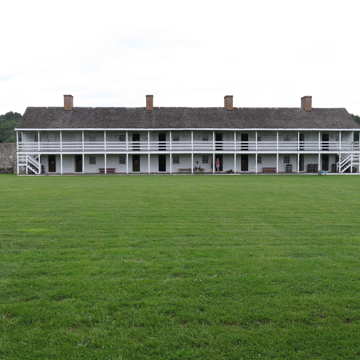Governor Horatio Sharpe requested that monies be appropriated in 1756 to build a substantial square fort with diamond-shaped bastions at each corner to protect the frontier settlers in western Maryland. A stone fort of this ambition was very unusual for the period, especially in such a remote location. Fort Frederick was never used in battle but did periodically garrison troops, house prisoners of war, and provide shelter to local inhabitants from the French and Indian War through the Civil War. By the early twentieth century, the fort walls were in partial ruin, purportedly with some sections still at full height. As reconstructed, the walls are nearly eighteen feet high at their tallest point and consist of three layers of stone, with rubble sandwiched between the outer walls of coursed limestone.
Today Fort Frederick State Park tells the story of the Civilian Conservation Corps (CCC) as much as the original military use. After acquisition to be Maryland’s first state park in 1922, the National Park Service assisted with archaeological and archival research. CCC Camp SP-1 began work in 1934 conducting archaeological digs and stabilizing and rebuilding the fort walls, as well as constructing a picnic area and state park administration and service buildings with squared logs and rustic stone chimneys. Using the stone foundations uncovered during the CCC period, two log 200-men barracks facing each other across the parade ground were reconstructed as a Bicentennial project in 1975.















